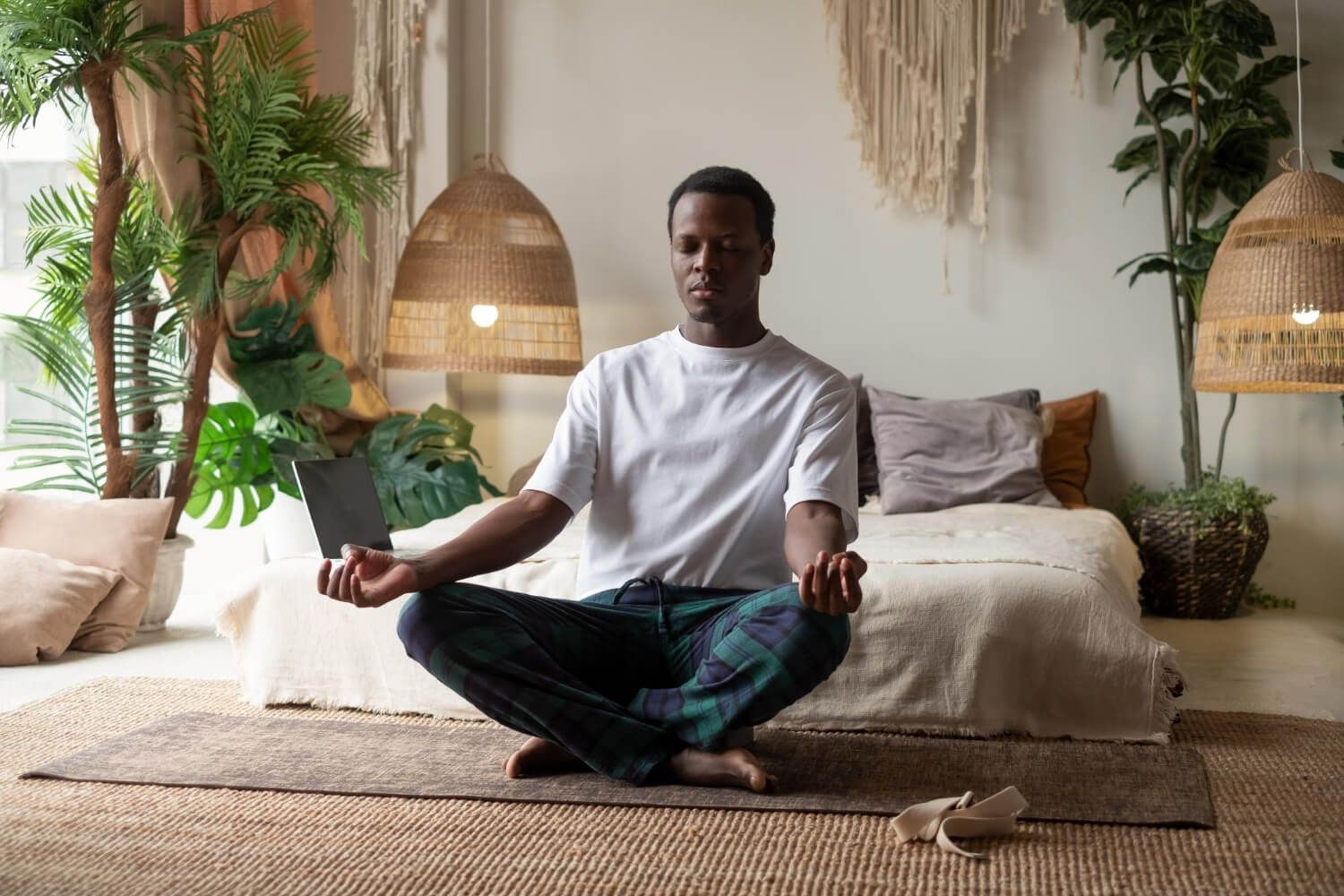Simple Nervous System Regulation Techniques You Can Start Using Today

Does your body sometimes feel like it's not your own? Maybe your heart races at unexpected moments, or you find yourself holding your breath without realizing it. Perhaps you feel disconnected from physical sensations, as if you're floating outside your body, or you experience sudden waves of panic that seem to come from nowhere.
If this sounds familiar, you're not alone. After 15 years of working with trauma survivors, I've learned that one of the most common experiences is feeling unsafe or disconnected in your own body. The good news? Your nervous system has an incredible capacity to heal and regulate, and there are simple, evidence-based techniques you can start using today to begin feeling more grounded and safe.
In this comprehensive guide, I'll share practical nervous system regulation techniques that you can implement immediately, along with the science behind why they work. Whether you're dealing with the aftermath of trauma, chronic stress, or simply want to feel more connected to your body, these tools can help you take those crucial first steps toward healing.

Understanding Your Nervous System: The Foundation of Feeling Safe
Before diving into techniques, it's helpful to understand what's happening in your body when you feel unsafe or disconnected. Your autonomic nervous system—the part that controls breathing, heart rate, and other automatic functions—has three main states, according to Polyvagal Theory developed by Dr. Stephen Porges:
1. Ventral Vagal State (Safe and Social)
This is your optimal state where you feel:
- Calm and connected
- Able to think clearly
- Capable of engaging with others
- Grounded in your body
- Emotionally regulated
2. Sympathetic Activation (Fight or Flight)
When your nervous system perceives threat, you might experience:
- Racing heart or rapid breathing
- Muscle tension
- Anxiety or panic
- Hypervigilance (constantly scanning for danger)
- Difficulty concentrating
3. Dorsal Vagal State (Shutdown)
When threat feels overwhelming, your system may shut down, leading to:
- Numbness or feeling disconnected
- Fatigue or depression
- Brain fog
- Feeling "frozen" or unable to act
- Emotional flatness
The key to nervous system regulation is learning to recognize these states and having tools to gently guide yourself back to safety and connection.
Why Traditional "Just Relax" Advice Doesn't Work
If you've ever been told to "just breathe" or "calm down" during a moment of distress, you know how frustrating and unhelpful this can feel. Here's why:
Your Nervous System Operates Below Conscious Awareness The autonomic nervous system responds to perceived threats automatically, often before your conscious mind even recognizes danger. Simply willing yourself to relax doesn't address this deeper level of activation.
Trauma Changes How Your System Responds When you've experienced trauma, your nervous system may become hypersensitive to potential threats, triggering protective responses even in safe situations. This isn't a character flaw—it's your system trying to keep you safe based on past experiences.
One-Size-Fits-All Approaches Miss Individual Needs What helps regulate one person's nervous system might activate another's. Effective regulation requires understanding your unique patterns and responses.

Immediate Nervous System Regulation Techniques You Can Use Today
For When You Feel Anxious or Overwhelmed (Sympathetic Activation)
1. The 4-7-8 Breathing Technique
This powerful technique activates your parasympathetic nervous system, signaling safety to your brain.
How to do it:
- Breathe in through your nose for 4 counts
- Hold your breath for 7 counts
- Exhale completely through your mouth for 8 counts
- Repeat 3-4 times
Why it works: The extended exhale activates your vagus nerve, the main pathway of your parasympathetic nervous system, which promotes calm and relaxation.
2. Cold Water Reset
This technique uses your body's natural dive response to quickly shift your nervous system state.
How to do it:
- Splash cold water on your face, especially around your eyes
- Hold a cold pack or ice cubes against your cheeks for 30 seconds
- Take a cold shower if possible
- Drink ice water slowly
Why it works: Cold temperature stimulates the vagus nerve and activates the dive response, naturally slowing your heart rate and calming your system.
3. Progressive Muscle Release
This technique helps discharge tension that builds up during stress responses.
How to do it:
- Start with your feet: tense the muscles for 5 seconds, then release
- Notice the difference between tension and relaxation
- Move up through your body: calves, thighs, abdomen, hands, arms, shoulders, face
- End by tensing your whole body for 5 seconds, then releasing completely
Why it works: This exercise helps complete the stress response cycle by allowing your muscles to discharge held tension, signaling to your nervous system that the threat has passed.
For When You Feel Numb or Disconnected (Dorsal Vagal Shutdown)
4. Gentle Movement and Sensation
When you're in shutdown, gentle activation can help bring you back online without overwhelming your system.
How to do it:
- Slowly move your fingers and toes
- Gently massage your arms or legs
- Rock back and forth slowly
- Do gentle neck rolls or shoulder shrugs
- Touch different textures (soft fabric, rough wood, cool metal)
Why it works: Gentle movement and sensation input help activate your sympathetic nervous system in a controlled way, gradually bringing you out of shutdown.
5. Sensory Engagement Techniques
These techniques help reconnect you with your environment and your body.
The 5-4-3-2-1 Grounding Technique:
- Name 5 things you can see
- 4 things you can touch
- 3 things you can hear
- 2 things you can smell
- 1 thing you can taste
Other sensory options:
- Listen to upbeat music
- Smell peppermint or citrus essential oils
- Eat something with a strong flavor (peppermint, lemon, dark chocolate)
- Look at bright colors or engaging visuals
Why it works: Engaging your senses helps bring you into the present moment and reactivate your connection to your body and environment.

Universal Techniques for Building Long-Term Regulation
6. Vagal Toning Exercises
Your vagus nerve is like a muscle—the more you exercise it, the stronger it becomes.
Humming and Singing:
- Hum your favorite tune for 2-3 minutes
- Sing along to music you enjoy
- Try "Ohm" chanting or other vocal toning
Gargling:
- Gargle water vigorously for 30 seconds, 2-3 times
- The vibration stimulates your vagus nerve
Why it works: These activities create vibrations that directly stimulate the vagus nerve, improving your overall capacity for self-regulation.
7. Bilateral Stimulation
This technique, borrowed from EMDR therapy, helps calm your nervous system by engaging both sides of your brain.
How to do it:
- Cross your arms over your chest and alternately tap your shoulders
- Pat your thighs alternately with your hands
- Walk while focusing on the alternating movement of your feet
- Listen to music with stereo headphones that alternates sounds between ears
Why it works: Bilateral stimulation helps integrate the logical and emotional parts of your brain, promoting regulation and reducing activation.
8. Heart Rate Variability (HRV) Breathing
This technique helps optimize the communication between your heart and brain.
How to do it:
- Breathe in for 5 counts
- Breathe out for 5 counts
- Maintain this rhythm for 3-5 minutes
- Focus on the area around your heart while breathing
Why it works: This breathing pattern optimizes heart rate variability, which is associated with better stress resilience and emotional regulation.
Building Your Personal Nervous System Regulation Toolkit
Step 1: Learn Your Patterns
Start paying attention to your nervous system states throughout the day:
- What does activation feel like in your body?
- What triggers tend to shift you out of regulation?
- Which techniques feel most helpful for you?
- What time of day do you feel most regulated?
Step 2: Practice During Calm Moments
Don't wait until you're activated to try these techniques. Practice them when you're already feeling relatively calm so they're available when you need them.
Step 3: Start Small and Build Gradually
Choose 1-2 techniques that feel most accessible and practice them for a week before adding others. Consistency is more important than variety.
Step 4: Create Environmental Supports
Set up your environment to support regulation:
- Keep a soft blanket nearby for comfort
- Have cold water or ice packs easily accessible
- Create a playlist of calming or energizing music
- Keep essential oils or comforting scents available

When Nervous System Regulation Techniques Aren't Enough
While these techniques can be incredibly helpful, it's important to recognize when you might need additional support. Consider reaching out to a trauma-informed therapist if you experience:
- Persistent difficulty with daily functioning
- Severe dissociation or feeling "outside" your body
- Panic attacks that don't respond to self-regulation techniques
- Sleep disturbances that significantly impact your life
- Thoughts of self-harm or suicide
- Relationship difficulties related to nervous system dysregulation
Professional Approaches That Support Nervous System Regulation
At Live Consciously, we integrate several therapeutic approaches that work specifically with nervous system regulation:
Somatic Experiencing: Helps process trauma stored in the body by working with sensation and natural healing responses.
EMDR: Uses bilateral stimulation to help your brain process difficult memories while maintaining nervous system regulation.
Internal Family Systems (IFS): Works with different "parts" of yourself, including protective parts that may be keeping your nervous system activated.
Polyvagal-Informed Therapy: Directly addresses nervous system states and teaches advanced regulation techniques.
Advanced Techniques for Deeper Regulation
Once you've mastered the basics, these advanced techniques can deepen your regulation capacity:
Co-Regulation Through Connection
Your nervous system naturally regulates through positive social connection:
- Spend time with calm, supportive people
- Practice eye contact with trusted individuals
- Engage in synchronized activities (walking together, singing)
- Consider therapy with a skilled trauma therapist who can provide professional co-regulation
Nature-Based Regulation
Spending time in nature provides natural nervous system benefits:
- Walk barefoot on grass or sand (grounding)
- Sit near moving water (streams, ocean waves)
- Practice tree gazing or forest bathing
- Garden or work with soil and plants
Rhythm and Movement
Your nervous system responds powerfully to rhythm:
- Dance to music you enjoy
- Use a rocking chair or swing
- Try drumming or other rhythmic activities
- Practice yoga or tai chi

Creating Your Daily Nervous System Care Routine
Just like physical fitness, nervous system regulation improves with consistent practice. Here's how to build a sustainable routine:
Morning Regulation (5-10 minutes)
- Check in with your nervous system state
- Do 2-3 minutes of HRV breathing
- Set an intention for staying regulated throughout the day
Midday Reset (2-3 minutes)
- Take 10 deep breaths
- Do a quick body scan
- Use grounding techniques if needed
Evening Wind-Down (10-15 minutes)
- Practice progressive muscle release
- Use humming or gentle vocals
- Reflect on moments of regulation from the day
Weekly Nervous System Care
- Spend time in nature
- Engage in activities that bring joy and connection
- Notice and celebrate improvements in regulation
The Science Behind Why These Techniques Work
Understanding the research behind these practices can help build confidence in using them:
Polyvagal Theory Research: Dr. Stephen Porges' research shows that stimulating the vagus nerve through breathing, vocalization, and other techniques can shift nervous system states.
Heart Rate Variability Studies: Research demonstrates that specific breathing patterns can improve stress resilience and emotional regulation.
Trauma-Informed Neuroscience: Studies show that bottom-up approaches (working with the body first) are often more effective for trauma recovery than top-down approaches (working with thoughts first).
Bilateral Stimulation Research: EMDR studies demonstrate that bilateral stimulation can calm the nervous system and help process difficult experiences.
Your Journey Toward Feeling Safe in Your Body
Learning to regulate your nervous system is not a linear process. You'll have good days and challenging days, moments of breakthrough and times when techniques don't seem to work. This is completely normal and part of the healing journey.
Remember that your nervous system learned its current patterns as a way to protect you. Be patient and compassionate with yourself as you teach it new ways of responding. Each time you practice these techniques, you're building new neural pathways that support regulation and resilience.
The goal isn't to never feel activated or to be calm all the time—emotions and nervous system responses are normal parts of being human. The goal is to develop the skills to recognize your states, have tools to work with them, and gradually expand your capacity to stay regulated in increasingly challenging situations.
Key Takeaways for Immediate Implementation
- Start with awareness: Notice your nervous system states without judgment
- Choose techniques that match your state: Calming techniques for activation, gentle stimulation for shutdown
- Practice consistently: Use these tools when you're already calm so they're available when you need them
- Be patient with the process: Nervous system healing takes time
Seek support when needed: Professional help can accelerate your progress
Ready to Take the Next Step in Your Healing Journey?
These nervous system regulation techniques are powerful tools for building safety and connection in your body, but sometimes additional support can make all the difference. If you're ready to deepen your healing with professional guidance, our team at Live Consciously specializes in trauma-informed approaches that honor your nervous system's wisdom while gently guiding you toward greater regulation and resilience.
Our therapists are trained in advanced nervous system regulation techniques and can help you develop a personalized approach to healing that addresses your unique needs and experiences.
Take the first step toward feeling truly safe in your body again. Schedule a free 15-minute consultation to learn how our specialized approach to nervous system regulation can support your healing journey.
Ready to feel safe in your body again?
📞
Call us: (254) 826-9450
📧
Email: info@liveconsciouslypllc.com
🌐
Visit: www.liveconsciouslypllc.com

About the Author
Alexandrea Long, LCSW-S is a Licensed Clinical Social Worker Supervisor specializing in trauma recovery and nervous system regulation at Live Consciously, PLLC. With over 15 years of experience in trauma-informed care, Alexandrea has advanced training in Somatic Experiencing, Polyvagal Theory applications, EMDR, and nervous system regulation techniques. She is passionate about helping clients understand the mind-body connection and develop practical skills for self-regulation and trauma recovery. Alexandrea has guided hundreds of trauma survivors in learning to feel safe and connected in their bodies through evidence-based, body-centered approaches.











